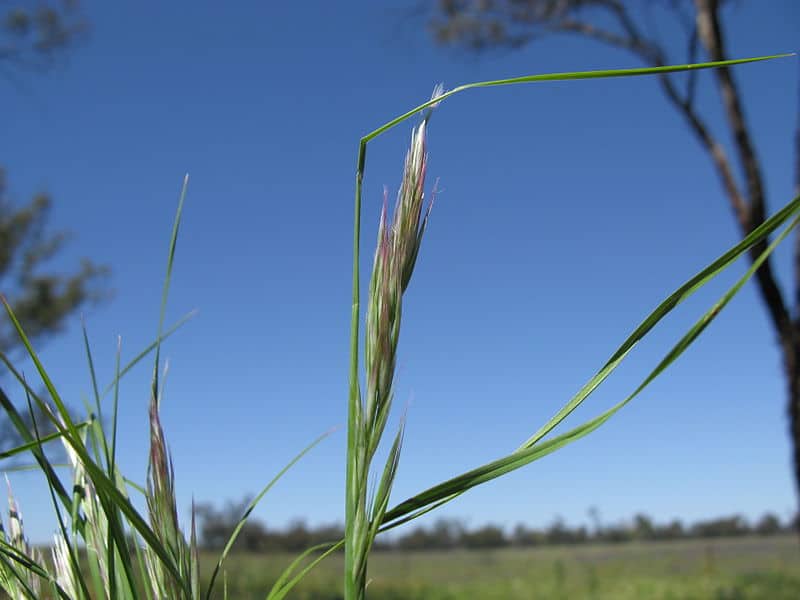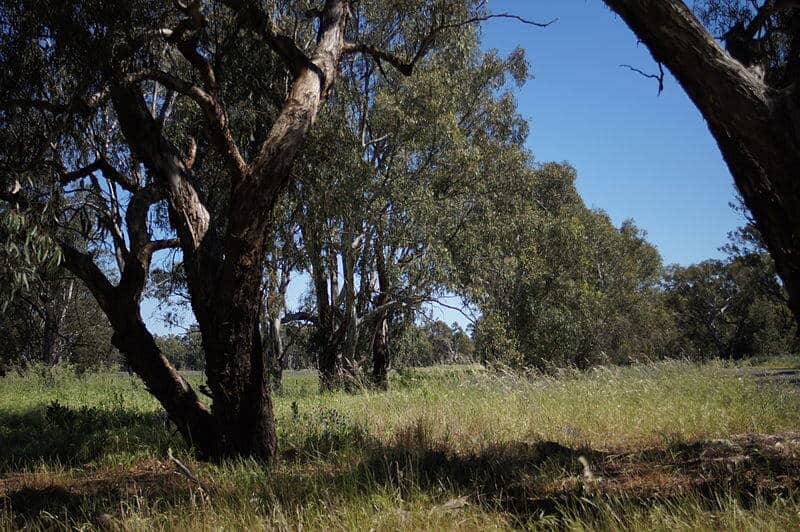Where in Southern Australia is there not Wallaby grass?
From poor to well-drained soil, from a grassland to a hill, and from the bush to the city – Wallaby grass can and will grow anywhere.
It’s one of many Australian native grasses, easily recognisable by its distinctive white tufts.
You can grow Wallaby grasses on a lawn since they persist under heavy grazing or mowing, meaning maintenance is very straightforward.
Cut back Wallaby grass using a brush cutter or lawn mower, down to a height of about 4-5cm. Water well while seeds are germinating, but once established, Wallaby grasses have little need for irrigation. These native grasses are prized for their high frost tolerance and heat tolerance, so they can grow under most conditions.
Wallaby thinking twice for? Here’s a guide to growing a Wallaby grass lawn.
About Wallaby Grass

Wallaby grass is one of many perennial native grasses that grow mostly in Southern and Eastern Australia.
It can be found anywhere from Victoria to New South Wales, all the way to Tasmania. It can also be found in South Australia and the southwest areas of Western Australia.
Wallaby is a native species alongside weeping grass and kangaroo grass.
There are several Wallaby grass species, although the most commonly grown is Rytidosperma caespitosum, or common Wallaby grass.
Other species include:
- Rytidosperma geniculatum or Kneed Wallaby grass
- Rytidosperma racemosum or Clustered Wallaby grass
- Rytidosperma setaceum or Small-flowered Wallaby grass
Wallaby grass is also known as tufted grass or white-top grass, and is a highly versatile garden plant.
It flowers from autumn into spring, and can grow anywhere between 20-90cm if left untrimmed.
Wallaby grass is recognisable by its dense tussocks of blue-green leaves with tall flower spikes topped by white tufts.
You can grow Wallaby grass in a raised garden bed or in pots, or as ground cover for your lawn.
Growing Wallaby Grass

Germination
Most native lawns can be grown from seed, or from seedling trays.
While germinating, keep the soil moist to allow the seeds to germinate or allow the seedlings to establish themselves.
Soil
Wallaby grasses can be grown anywhere from medium clays to light sandy loams, so long as the soil has good drainage.
They’ll thrive best in slightly acidic soils, but can grow in neutral ground.
Light
These grasses grow best in full sun, but can tolerate partial shade.
Climate
As they tolerate frost, Wallaby grasses can be grown in a number of climates, but thrive best in temperate regions.
Water
The ground must be kept moist while the Wallaby grass seeds are germinating, but after growth, these plants have high drought tolerance and can survive without irrigation.
Following germination, you can encourage deeper root systems by slowly increasing the time between watering.
Eventually, your lawn will have grown enough to survive on rainfall, although you can water extra during dry months.
Wallaby grass may turn brown during a drought or the summer, but as long as the root system is well-established, it will re-sprout after it rains.
Maintaining A Wallaby Grass Lawn

When growing Wallaby grass on a lawn – especially common Wallaby grass – pruning or mowing is important.
Allow your plants to grow during autumn to early spring so they can flower and re-energise themselves.
Then mow down to a height of 4-5cm as needed. If you need a hand in maintaining your native lawn, hire a lawn mowing service to help out!
There is no need to fertilise a Wallaby grass lawn. Many Australian grass species grow well even in low-nutrition soil.
After mowing, simply using the clippings as fertiliser should be enough to return some nutrients.
(Tip: Ask your lawn mowing service to keep the clippings for mulching afterwards!)
Other Wallaby Grass Uses
Weed control
Because native species thrive in low-fertility soils, planting a native grass can help reduce the number of weeds in your lawn since weeds will be at a disadvantage.
Pasture
Tufted grass makes for good pasture grass as it has high digestibility and nutrition.
It also persists despite intermittent grazing. In the wild, wallaby grass can be eaten by kangaroos and – you guessed it – wallabies.
Soil erosion
This is a key grass for revegetating disrupted soil since its root system allows it to hold onto the ground and prevent soil erosion.
It is commonly grown along roadsides where soil is shallow.
Wildlife shelter
A Wallaby grass lawn, like other tussock grasses, tends to attract birds that feed on the seeds.
When planted in clusters, it can also provide refuge for small lizards and other tiny animals.

